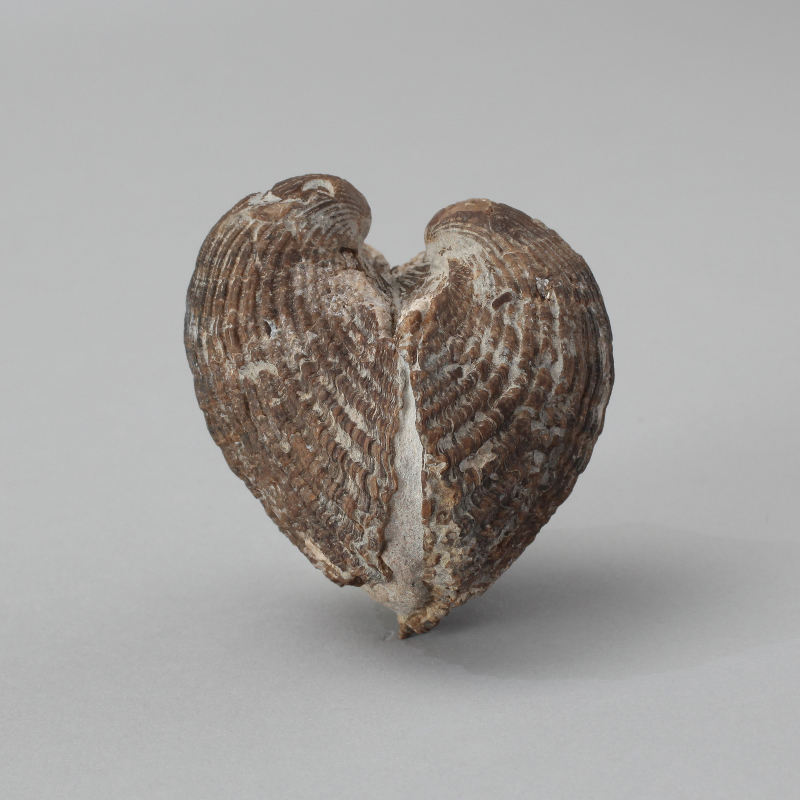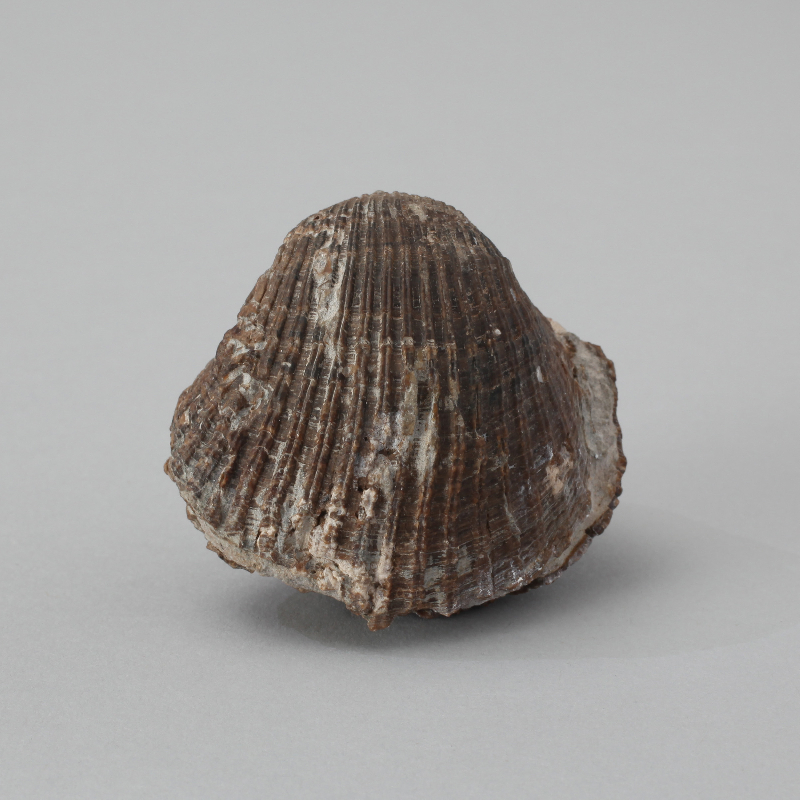- 資料名
- アラサワサルボウ
- 展示の有無
- 有
- 採集地
- 仙北市田沢湖
- 地層名
- 山津田層
- 学名
- Anadara arasawaensis
- 資料解説
-
フネガイ科に属する二枚貝。殻は厚く、約30本の放射肋と成長脈を有する。
秋田駒ヶ岳北側の沢では、標高900m付近で貝化石が産出する。その貝化石を産出する山津田層は、およそ1000万~800万年前の浅い海底に積もった砂や泥からなる。閉じたままの二枚貝が多いことから、死んでから運ばれたのではなく、棲んでいた場所で化石になったと考えられる。
その後、海底が押し上げれられ、その浅い海底は現在の奥羽山脈の西側になった。
Anadara arasawaensis is a bivalve in the family Arcidae. It has about 30 radiating ribs and growth lines.
Shell fossils can be found at an elevation of 900 m in valleys on the north bank of Akita's Mt. Komagatake. The Yamatsuda Formation in which the shell fossils are found is made from sand and mud that had accumulated on the shallow ocean floor 8-10 million years ago. Many of the shell fossils are of the clams that remained shut. For this reason it is believe that they began fossils in the place they were living and not carried to that area after death.
Thereafter, the sea floor was raised up and the shallow ocean floor became the west side of the present-day Ou Mountains.


